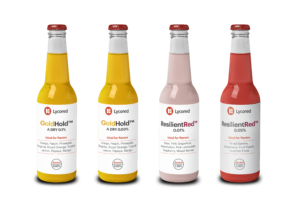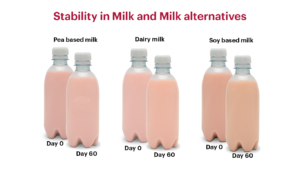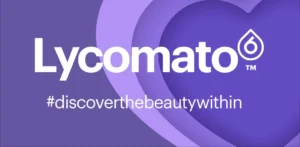Nature based solutions to replace artificial colors
Consumer awareness of food, health, and other household products is growing and with that, the demand for naturally derived, plant-based colors is soaring.
January 15th 2025, the FDA announced that they would be revoking their authorizations for Red No. 3 in food and ingested drugs. The Lycored team comments on the situation.
In a new ruling on January 15, 2025, the FDA announced it would revoke the authorization to use Red No. 3 in food and ingested drugs. Food manufacturers will have until 2027 to reformulate, and ingested drug manufacturers will have until 2028.
This new decision will affect food manufacturers and consumers in many ways. Lycored, a supplier of naturally derived colorants for food and health applications, talks about the ins and outs of the ruling and the options manufacturers have.
Red No. 3, Red Dye No. 3, Red Dye 3, or erythrosine, is a synthetic food dye that gives certain foods and drinks a bright, cherry-red color. It is mostly used in candy, cakes and cupcakes, cookies, frozen desserts, frostings and icings, and ingested drugs. According to the USDA’s FoodData, more than 8,000 food products currently on the shelves contain this color additive.
The FDA based its ruling on the Delaney Clause, a 1958 law prohibiting any food additives found to induce cancer in humans or animals. While human studies did not show carcinogenic effects, two studies linked cancer in laboratory rats to high exposure to Red. No. 3. The animal studies were sufficient to revoke the color’s authorization.
The agency gave food manufacturers until January 15, 2027, to reformulate and ingested drugs manufacturers until January 18, 2028. The restriction will apply to foods manufactured and sold in the U.S. and food imported to the U.S.
The FDA’s decision to revoke Red No.3’s authorization, while welcomed by industry advocates, shouldn’t cause any products to be removed from the market come the deadline.
Most manufacturers were already planning their formulation strategies in light of the 2023 California bill, which 10 other states have since followed. Some multinationals have also already had to reformulate their products to fit the standards of other countries. If anything, Red No. 3 might only be one of the reformulations that will be taking place for brands and manufacturers over the next few years.
Additionally, suppliers of naturally derived colors would have already done the heavy legwork for manufacturers starting their reformulation journey now.
In both cases, moving away from Red No. 3 is only expected to add value to the products concerned, for both consumers and manufacturers. Some of the alternatives to Red No. 3 are cheaper in use, and as consumers seek products that more closely align with their desire for more wholesome foods, brands, and manufacturers may find that reformulating will open their products to a wider market.
On the consumer side, the ruling should add value to the products they already know and love. The FDA’s decision aims to ensure food safety for consumers.
In the case of Red No. 3, more consumers, specifically parents, have started to seek products free of controversial artificial colors for their children and families. Even if the change in color ingredient is slightly noticeable, it should be overwhelmingly welcomed by the public. As mentioned earlier, with alternatives to artificial colorants having little price difference, the changes are not expected to raise the price of any products.
More than nourishment, food has become an extension of one’s health choices and values. For consumers, replacing controversial dyes is also about the trust they can put into a product or brand. This move is getting consumers closer to the clear labeling and transparency the public wants to see on their foods.
Thankfully for all parties of the artificial colors discussion, there are many alternatives to Red No. 3.
As mentioned in an interview by Elaine Lee, applications manager at Lycored: ” Consumers are voicing a clear preference for more wholesome, clean label F&B and are seeking products made without synthetic colors.”. Lycopene-based colors are uniquely positioned to answer consumers’ demands, with their superstable hue through challenging processes and bright, crave-worthy colors.
Reds in Beverages
Consumers eat (and drink) with their eyes first, and a beverage product looking true to fruit or flavor is likely to increase the sensory appeal of a product.
In beverages, our closest match to Red No. 3 is ResilientRed A. Consistent through various pH conditions, it offers exemplary stability for up to 12 months.
Red in Confectionary
Candies in all shapes and forms are just more fun with a pop of color. However, when catering to a very young consumer base, many parents are eager to find color solutions they can trust.
For bright, clean label-friendly colors in candy, ConstantCrimson B offers great stability, with no crystallization and other common problems associated with water-soluble colors.
Reds in Dairy
Color use in dairy, UHT dairy and plant-based UHT also needs to answer the need for fun, bright naturally derived colors to provide products parents can trust giving their children.

ResoluteRuby A, ConstantCrimson A, and ResilientRed BF provide red shades stable through processing and storage. Additionally, while they are all clean label-friendly, and nature-based, ResilientRed BF is also Whole Foods Compliant offering the opportunity to enter premium markets, where customer loyalty is high and takes on a social identity and sense of community.
Reds in Frostings
Picture this: a tray of cupcakes, all sporting a slightly different shade of pink. Even knowing that they are freshly baked, that image will put a damper on the tasting experience.
Thankfully, ConstantCrimson A and ResilientRed A can offer consistent colors in icings consumers can feel confident in.
In conclusion, the FDA ruling came out with a ban(g). However, the federal decision will only accelerate reformulation processes that many brands and manufacturers have already started, answering growing consumer demand for more wholesome labels. Many food ingredient supplies, such as Lycored, offer nature-based alternatives to Red No. 3 with the added value of clean label-friendliness and a deep knowledge of formulations and applications. In this context, manufacturers are only set up for success to meet the new standards of the FDA.
Learn more about Lycored’s color portfolio here.

Consumer awareness of food, health, and other household products is growing and with that, the demand for naturally derived, plant-based colors is soaring.

Supplements aren’t going anywhere, and with bustling nutraceutical trends, manufacturers need to keep on top of consumer demands. Understanding Today’s Nutraceutical Trends and Consumer The supplements industry has gone through...

In our latest webinar, Elizabeth Tarshish, PhD, Head of Scientific Value & Strategy at Lycored discusses Lycomato’s impact on cellular and mitochondrial health and how it promotes longevity through a...
Interested in speaking directly with a member of our team?
Click below to get in touch.